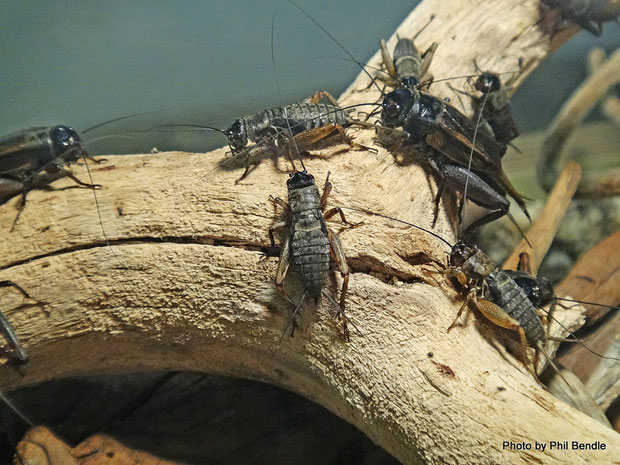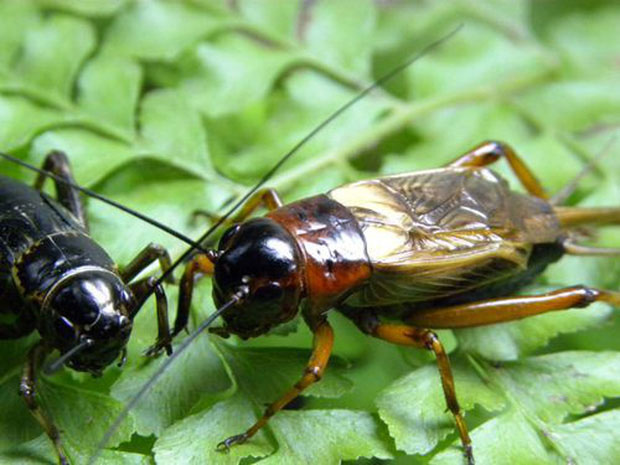A lot of things about ancient Chinese cricket cages: Great artifacts of mankind
Since the Tang Dynasty (618-907), in China there has been an interest in raising crickets. People love this "musician" of nature so much that they can create all kinds of specialized cages from clay to gold, even trying to carve them into beautiful art forms.
Crickets - musicians of nature: Easy to breed insects
Cricket is a species with a short life span, only about 70-90 days. It is said that since the Tang Dynasty (618-907) of China, the frequency bands in the palace have had a tradition of bringing together crickets to collect.
It is estimated that there are about 1,000 different species of crickets in the wild, divided into two branches of Gryllidae and mole (Gryllotalpidae).

Cricket is a species with a short life span, only about 70-90 days.
It is not difficult to raise crickets because they are omnivores, digesting both vegetables, fruits and other smaller insects. But the main reason that a phone is "pet" is because the male knows the back of the neck. By brushing the outer hard wings, there are many interwoven tendons, they make a sound.
Originally ancient, the Chinese emperor came to the palace palace, the frequency of thousands of people. In order to lessen the boredom in the months of waiting for the turn of grace, these free women draw all kinds of fun, including raising crickets.

Since the 8th century, raising crickets has been in Chinese palaces.
According to records, at least from the 8th century, raising crickets is already in the Chinese palace. Although it is not certain that the "king wives" are the initiators of cricket farming, it is true that they like to catch crickets to raise, but the folk also follow.
Forced to lock up because it cannot be tamed
As a "treasure" of the bow, crickets are locked in precious gold and silver cages. People put crickets at the head of the bed, eager to hear them crow.
Although raising crickets is not difficult, it is not possible to tame them into "pets" . The insect's brain is too small, only aware of its instincts, but does not develop emotions like higher organisms (eg birds and animals).

Crickets are easy to raise but must be locked up.
China is a land of four seasons, a hot summer and a cold winter. Although crickets are easy to raise, they also need specialized restraint tools to ensure cool summer and warm winter.
Initially, people simply locked crickets in clay jars. Ceramics have appeared soon, providing all kinds of useful items for daily life. Just a bit of variation is that the potters already have a cap with a lid, which has an air outlet suitable for the mobile phone.
But the inconvenience is that earthenware can not be used for winter. It's too cold, causing crickets to die from cold. They need a cage type that is both airy and cozy. And to meet, the cage of gourds came into being.

Look like a lot of crickets.
Gourd fruit: The most popular and popular crickets cage
The gourd is a familiar plant in Asia, grown with young fruits as food and shells to make ladles.
Also since the Tang Dynasty, Chinese people know how to take dry hollowed gourds as cages for crickets . Unlike the cold clay jar in winter weather, the inside of the gourd is quite cozy. Just mix the soil and lime to cover a layer at the bottom or add a piece of cotton, so the " pet" has "roof".

Cage of gourd.
To make cricket cages, first dry them and remove the intestines. After that, add some holes for the air to get in and out. There is such a sketchy thing that I am not worthy of "natural musicians". The artisans entered, turning the dry gourd into a masterful masterpiece masterpiece.
At first, people only paint on a dry gourd. After that, we created the shape of the gourd of the gourd from the new flower. They inserted metal or metal molds into the gourd, forcing them to grow in the desired style. The world of gourd crickets becomes diverse, ranging from natural circles to cylindrical, square, vase .
Above all is the attempt to decorate the shell and the lid of the gourd. Through the skillful hands of artisans, they have a simple geometric pattern to the carved dragon flying dragon extremely sophisticated.
Especially in addition to beautiful, gourd cricket cage also amplifies sound. It helps make crickets sound better and better.
Me crickets through the age, until now has not yet
After the pods, the Chinese also crafted cricket cages from tortoise shells to coconut shells, sandalwood, even ivory. But the most common is still the cage of gourd, bamboo, wood, metal . The reason is simple, because they are cheap and available and easy to create. In addition to cages, people also cast a super tiny porcelain tray to hold food for crickets.

Old craftsmanship masterpieces used to hold crickets.
In nature, except the use of a crow to flirt with children, male crickets also use it to "show off martial arts" to their children of the same gender. They are extremely aggressive, possibly because of the struggle for children or territories that fight one to one.
After the pleasure of listening to the crowing, the Han people were also passionate about cricket matches, raising crickets. Since the Song Dynasty (960-1279), fighting crickets has become a widespread hobby.
Interestingly, despite the past 1000 years, Chinese people still have not fallen in love with crickets. It's just that at cricket selling points today, they don't use old craftsmanship masterpieces anymore, but use simple bamboo or plastic cages.
- Crickets and other interesting information you may not know
- 12 mysterious lands in the world
- Great way to cool the barn in the hot summer
- Excavation of the grave involves Alexander the Great in Greece
- 10 amazing items with ancient Chinese words surprise you
- Things that make you see how great the ancient Egyptians were
- Discovered a thousand year-old grave in China
- Ancient tomb 2,000 years next to the silk road on the sea
- Great innovations are born of the idea of
- The 10 most original and ancient artifacts of humanity
- Precious antiques in noble grave populations 2400 years
- Many ancient thousands of years old stone artifacts were found in North Iran cemetery
 'Fine laughs' - Scary and painful torture in ancient times
'Fine laughs' - Scary and painful torture in ancient times The sequence of numbers 142857 of the Egyptian pyramids is known as the strangest number in the world - Why?
The sequence of numbers 142857 of the Egyptian pyramids is known as the strangest number in the world - Why? History of the iron
History of the iron What is alum?
What is alum?